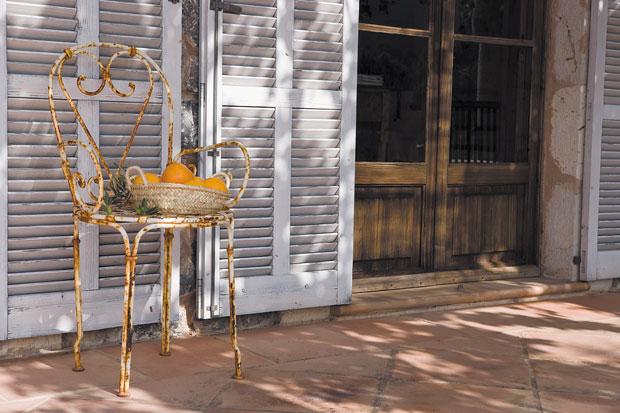Living in Hawaii, rain and wet weather make rust a common occurrence. But just because furniture has some problem spots, doesn’t mean it’s time for the trash
Today is the last Sunday we’ll spend in our apartment. Later this week, we’ll move to a new home. While I absolutely love this apartment and the friendly neighbors we see daily, I also can’t help but get excited for the move. Our new place comes with more space for storage and furniture, and I’m determined to fill it with only the things I truly love.
Recently, while visiting my friend and florist, Jeffy, I fixated on the many unique pieces of furniture and decor throughout his home. What’s great is that he has either made or restored almost every piece he owns. He helped me see that just because something has rusted, it doesn’t mean it has lost its beauty.
Whether you plan to refurbish an existing piece, or you want to take advantage of a rusty find, you can remove rust by using any of the following methods. (Quick tip: Bulky trash pickup days are great sources for uncovering treasures. Check opala.org for specific dates and times.)

Use the items in your kitchen. Crumple aluminum foil so you can handle it like a sponge. Dip it in white vinegar and scrub away at the rust. Rinse with clean water when you are done. Or, if your item is small enough to soak, place it in a mixture of white vinegar, baking soda and lemon juice for 10 minutes. Remove, wipe down, and repeat if necessary.
Super-soak it. If you want to go the chemical route, there are plenty of rust removers available. First, thoroughly remove all the paint from the item. Next, follow the package directions and make sure to use rubber gloves, goggles and a respirator to protect against the fumes and harshness of the chemicals. Spray the remover on the rusted areas of the piece and immerse items that are extremely rusted. If they are too big for immersion, just spray them liberally with the product. Finish off by rinsing with clean water. Repeat this process as needed.
Power up. Any power tool that can be fitted with a fiber disc, stripping disc or grinding wheel should do the trick. Think grinders, sanders or even drills. Start with a coarse abrasive and work your way to a finer grit once the rust wears down. Keep the tool moving as you go, and practice before you start, if possible.
No matter what method you choose, protect your piece when you’re done. You can use finishing wax or a rust-free primer and paint. Also, remember to test a small, inconspicuous area of your item before proceeding with any type of treatments.
Have a comment or question for Joanne? Email thefixisinhawaii@gmail.com.